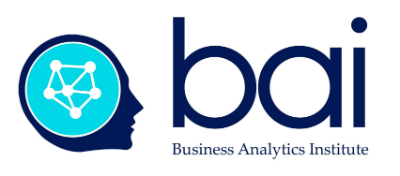Analytics is also about solving life's little problems – like finding a parking space at the beach….
After the results of Sunday’s French elections, we decided to head off to the beach at the Old Port of Biarritz for the extended weekend break. A short hour’s drive from our apartment in Pau, the challenge of staying in Biarritz is finding a parking space anywhere close to the seaside hotels. As you drive through the town’s narrow streets, the parking spaces become few and far between. The eternal question for anyone who looks at the data (or at least at the beach) is: should I take the first available parking space and walk a couple of kilometers to the hotel, or wait until maybe a find a closer spot?
If Big Data is focus of a media feeding frenzy, analytics is the mindset of how we look at everyday problems, and how we search for practical results. Simple problems are those in which the answer can be found in the data at hand, problems in which past experience leads us to believe in one best way. Complex problems are those in which the data isn’t sufficient to find the right answer, scholastic environments in which we are left to calculate the better solution in specific contexts. Whether it be predicting the winning candidate in a presidential election, or finding a parking space as close to the beach as possible, complex challenges require thinking about the problem before looking for the answer.
People don’t solve problems in a uniform manner, and people don’t look at the data in the same way. Daniel Kahneman suggests that we basically use two processes in dealing with our daily challenges.[1] System 1 thinking is essentially intuition, relying on our past experience to react quickly and spontaneously to environmental challenges. System 2 is more closely associated with critical thinking, in which we employ rational thinking, or at least bounded rationality, to think through the most appropriate response to a given problem. Kahneman’s work goes on to explore the pertinence of each depending on the nature of the problem to be solved.
Neither “system” implies that people look objectively at the data. The data that we see is shaded by several cognitive filters that are deployed sub-consciously to aggregate, to organize, and to interpret what we see. The framing effect, for example, influences how people react positively or negatively to a problem depending on how the data is presented. Anchoring refers to the tendency to privilege the first piece of information offered (the "anchor") when making decisions. The bandwagon effect describes the tendency to believe things because many other people do. Improving decision-making often doesn’t require better or more abundant data, but simply accounting for how people actually look at the data they have.
Improving our chances of finding a parking space in a resort town on a sunny afternoon isn’t rocket science, but it can benefit from analytics. The traffic in town is little help in gauging parking at the beach, and framing the problem can give us different outlooks on what we are really looking for (a parking space or carrying the suitcases as little as possible?). Prof. Donald Shoup of UCLA has given this very practical problem considerable thought.[2] The problem is complex, for the observable data (the parked cars we see as we are driving to the sea) doesn’t tell us where the closest open parking space can be found. Our previous beach experience can help us determine whether we believe that 99% or 85% of the spaces will be taken as we get closer to shore. Assuming an equal distribution of parked cars; in the first case, we would be wise to take the first available space when we are four hundred meters (about one-forth of a mile) from the hotel, in the second, we can reasonably wait until we are fifteen meters (fifty feet) away.
The practice of business analytics is heart and soul of the Business Analytics Institute. In our Summer School in Bayonne, as well as in our Master Classes in Europe, we put analytics to work for you and for your organization. The Institute focuses on five applications of of data science for managers: working in the digital age, data-driven decision making, machine learning, community management, and visual communications. Data-driven decision making can make difference in your future work and career.
Originally published at www.medium.com.
_____________
[1] Kahneman, D. (2015). Thinking, fast and slow. 1st ed. New York: Farrar, Straus and Giroux.
[2] See for example, Shoup, D. (2007), Cruising for Parking, Access, n.30, Spring http://shoup.bol.ucla.edu/CruisingForParkingAccess.pdf


